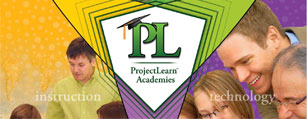Building student questioning skills
How to help students acquire the inquiry skills necessary for successful project-based learning.

Many educators today are choosing project-based learning to better prepare students to thrive in our rapidly changing world. In a PBL approach, students are presented with a real issue or problem and learn content to solve it.
This student-centered approach requires students to not only find, analyze, and apply information, but initiate inquiry themselves. So not only are questions as important as answers, the ability to ask quality questions is essential to student success.
“Questioning is to thinking as yeast is to breadmaking.”
— Jamie McKenzie
Questions can also help build student engagement. When students formulate the questions, they are more motivated to search for answers and solutions.
Students aren’t going to magically start questioning on their own. They need to be exposed to quality questions, understand how questions work, practice asking questions to build their skills, and eventually take on the responsibility of driving classroom inquiry.
Modeling and classroom culture
A culture that encourages questioning is essential. This seems like a simple proposition, but so much of what we ask students to do at school is ANSWER questions. The classroom culture should reflect that questions are equally or more valuable than answers. Students are more likely to question when it is:
- Safe - adequate time, with options
- Rewarded - risks acknowledged, benefits awarded
- Fun - make it a game or challenge
- Routine - habitual part of process
Often, students who ask a lot of questions are silenced and treated as off-task or annoying. That doesn’t mean all questions should be treated equally. Merely asking questions isn’t adequatess. students must formulate quality questions that connect to the topic, hone in on key ideas, and extend thinking.
Be sure to model this inquiry by asking students both closed and open questions.
Teach students how different questions have different purposes
Take time to specifically address how different types of questions elicit different types of thinking and answers.
Take, for example, a traditional 5 W’s organizer - who, what, when, where, and why. Students can ask these questions before writing a story or informational text to record and cement understanding. Students can ask these questions before writing a story or information piece to consider important details they should include.
All of these questions are not the same. The first four drive toward a single answer that can be found in the text or stated clearly.

Why and How questions are different. They most often have multiple correct answers or answers that are debatable. Rather than simply finding an answer, students must think about the questions, determine possible answers, choose what they think is the best answer and support it with evidence.
How questions can span a range of purposes; such as how did…? and how could…? and how come…?. Before students can ask the correct how question, they must consider the type of answer they want to find.
Many language arts educators use the Question-Answer Relationship strategy to help students understand that different questions require different actions.
- Right There questions have specific answers that can be found in the text.
- Think and Search questions have answers combined from different parts of the text.
- Author and You questions have answers that combine what is stated in the text with a student's experience.
- On My Own questions relate to themes in the text, but answers are based only on a student’s experience.
Help students gain familiarity with these different types of questions by having them answer a question of each type as they respond to what they are reading. Better yet, after they read a selection, ask them to craft each type of question on their own and pose them to their classmates. Have classmates identify which type of question a student is asking before working to find or develop the answer.
Employ the Question Formulation Technique
It takes work to learn how to craft questions for deep inquiry. The Question Formulation Technique, developed by Luz Santana and Dan Rothstein of the Right Question Institute, can help them build these skills. The steps in the QFT are:
- Design a question focus
- Produce questions
- Work with open and closed questions
- Prioritize questions
- Plan next steps
- Reflect
In step 1 of the process, students are given a Question Focus Statement the teacher has developed. Students think about the statement independently and or discuss it with classmates. In step 2, students begin producing questions about the statement.
SDuring step 3, students identify which of their questions are open and which are closed. This is likely a new concept for them, so the first time you do this step you need to explicitly teach them the definitions of both. Closed questions are those that have a single or correct answer. Open questions have many answers or ask for an opinion supported by evidence.
The first few times you will likely need to work together to determine if the questions they have produced are open or closed. Even as students gain confidence with this process, asking students to share, explain and discuss their choices, continues to deepen their understanding.
Step 3 also requires students to rewrite their closed questions as open and adjust their open questions to closed. Students soon realize that open questions are more engaging and thought-provoking and promote further exploration and debate. They also come to learn that knowing the answers to closed questions can help them properly address the open questions.
During step 4, student teams order and prioritize their questions to show which they consider the highest quality and most interesting. Which questions are worth the time to pursue? Finally, in step 5, students plan their next steps, choosing which questions will be the focus for their project and how they will begin their work researching and developing a response.

When their work is complete, students complete step 6, reflecting on the success of the questioning process and how it impacted their final results.
Practice. Practice. Practice.
It takes a lot of practice before you can fully transfer responsibility for inquiry to your students. Model your inquiry process by asking a combination of closed and open questions and discussing the purpose of your questions. Decrease the number of questions you ask and instead provide students with an image, video or text passage that prompts their own questioning. Give students ample time to think and explain, so you can hold their inquiry to high standards.
High-quality questions are crucial to effective and successful project work. As students build their capacity for effective inquiry, give them responsibility for this part of the process so that learning becomes truly student-centered.










